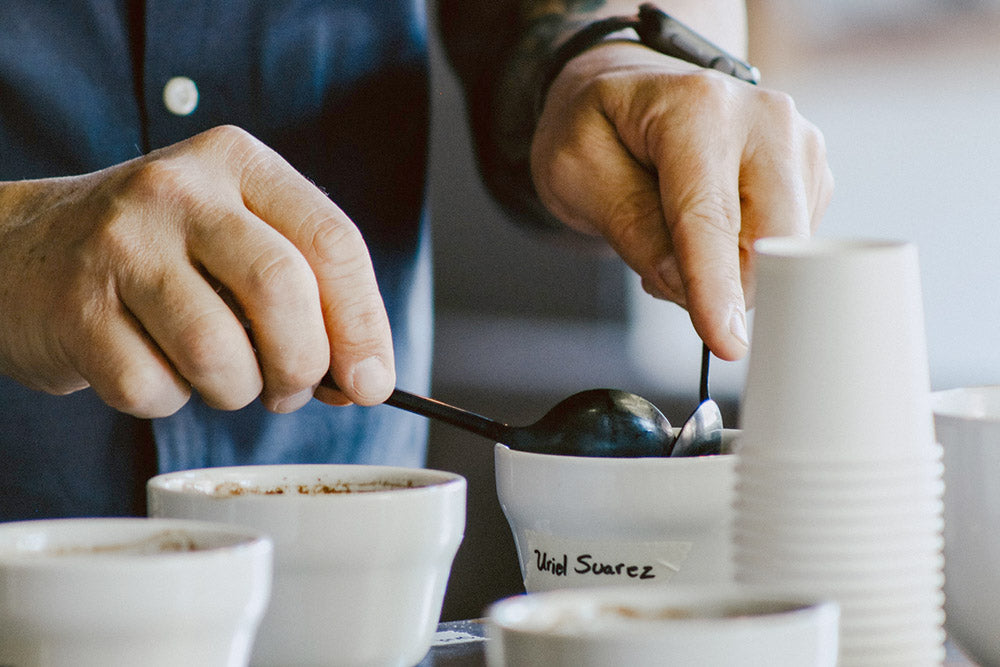We source coffee from small farms better known as micro-lots and we only purchase specialty grade coffees. The smaller the farm the bigger the impact we have at uplifting the farmer and their community. We get asked often what makes specialty coffee so special. Well, Specialty coffees are treated differently than commodity market coffees, specialty coffees are grown at higher elevations, are traceable back to the source, and are carefully processed after harvest. Please read our blog post titled “Coffee Processing Methods in Colombia” for more information on harvesting and processing coffee beans.
Specialty coffees also have to meet a certain score to be considered “Specialty Grade”. The scoring is conducted by a certified Q-grader. In order to become a licensed Q-grader. An individual must go through a rigorous 22 step test to get certified and acquire an actual license to grade coffee. This individual must have the ability to consistently and accurately grade coffee to the Specialty Coffee Associations cupping and grading standards. Similar to a wine sommelier a Q-grader must understand the complexity of the coffee flavor from; roast level, fragrance/aromatics, to acidity intensity and body. As well as check for any defects through uniformity from cup to cup and overall cup cleanliness. All of these flavor descriptors have checkpoints and they tally up to a total of 100 points.
Specialty Coffee has several levels to it:

Now that we know what a Q-grader is and how they acquire their license lets talk about the tasting method used when conducting the evaluation. The coffee gets graded by a Q-grader at what coffee professionals call “the cupping table”. Cupping is a method where hot water just off the boil is poured onto freshly roasted ground coffee beans that sit in designated cupping bowls or cups. We allow the coffee and water to be immersed together for 4 minutes. The 4-minute mark is an important part of cupping called the break. When hot water hits the coffee grounds a muffin top crust forms at the top of the cupping bowl. At the 4 minute mark, we break the crust that formed on the top and use our cupping spoons to clean up the oils/slurry that gets left behind. The break is important because it slows down the coffee extraction and releases the wet aromatics trapped inside the coffee. The next step is to let the coffee cool for about 7-minutes before we slurp a coffee sample for grading.
Cupping is the universal form to evaluate coffee quality. It is used by coffee producers, Importers, roasters, and baristas to taste coffee as blindly as possible; with no filters to tarnish the purity of the coffee flavor. At Progeny, we use cupping as a method to efficiently perform quality control at the source, after import, and throughout the production run of each coffee in our collection. Cupping is also a great way to increase your knowledge about coffee, it can help you identify differences between cultivar and even countries of origin.
